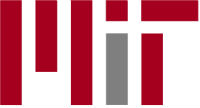College Pirates? U.S. Universities Ranked by BitTorrent Usage
dimanche 8 septembre 2013 à 22:30 BitTorrent has plenty of legitimate uses but much of the traffic that passes through can be linked to copyright infringement.
BitTorrent has plenty of legitimate uses but much of the traffic that passes through can be linked to copyright infringement.
This is true on all regular Internet providers but also on university networks. Unlike consumer ISPs, however, educational institutions are required by law to prevent copyright infringement to the best of their ability.
In 2010 the U.S. Government added a new requirement for colleges and universities to stop illicit file-sharing on their networks. This legislation puts a defiant school at risk of losing federal funding if it doesn’t do enough to stop illicit file-sharers on its campus.
Schools across the country responded appropriately to the new rules and some institutions have spent hundreds of thousands of dollars to install anti-file-sharing systems on their networks. While these efforts may have been somewhat successful, college piracy hasn’t been completely eliminated.
With help from the BitTorrent monitoring outfit Scaneye we were able to see the presence of individual universities on the popular file-sharing protocol. Scaneye looks at the IP-addresses that are sharing files on BitTorrent, and records every encounter as a “hit.” More hits therefore means that BitTorrent usage is more prevalent on the network.
As can be seen on the table below, the Massachusetts Institute of Technology leads the list with 1809 “hits” since January 1 of this year. Rutgers University follows in second place with 986 hits.
The rest of the top five is made up by New York University, the University of Houston and Texas A&M University.
Compared to last year the University of Illinois made the biggest jump from the 41st place to 6th. Conversely, The University of California, San Diego, was in 19th place last year and has since dropped out of the top 50.
Since BitTorrent can be used for many legitimate purposes we took several samples of the content being downloaded on the university networks, and the majority is clearly infringing.
While students and staff are certainly pirating movies, software and music, it is certainly not rampant. Especially when you take into account that some universities have hundreds of thousands of students, and that a single student can generate several hits.
To put things in perspective, most residential ISPs have millions of hits every month, and even the Department of Homeland Security has hundreds of pirates in its organization.
Below is the full list of the top 50 universities ranked by (absolute) BitTorrent usage in 2013. The older 2012 ranking of universities based on the student population is available here.
| # | 2012 | University | Hits |
|---|---|---|---|
| torrentfreak.com | |||
| 1 | (1) | Massachusetts Institute of Technology | 1935 |
| 2 | (2) | Rutgers University | 1851 |
| 3 | (3) | New York University | 1401 |
| 4 | (4) | University Of Houston | 1088 |
| 5 | (6) | Texas A&M University | 900 |
| 6 | (41) | University of Illinois | 850 |
| 7 | (12) | Northeastern University | 826 |
| 8 | (…) | Georgia Institute of Technology | 741 |
| 9 | (15) | Columbia University | 722 |
| 10 | (13) | Michigan State University | 702 |
| 11 | (39) | University of Washington | 699 |
| 12 | (10) | University of Maryland | 689 |
| 13 | (5) | University of Southern California | 679 |
| 14 | (7) | The George Washington University | 671 |
| 15 | (37) | University of California at Berkeley | 613 |
| 16 | (8) | University of Minnesota | 613 |
| 17 | (16) | Boston University | 591 |
| 18 | (…) | University of California, Los Angeles | 580 |
| 19 | (21) | Ohio State University | 561 |
| 20 | (1) | Ohio State University | 558 |
| 21 | (…) | Rochester Institute of Technology | 550 |
| 22 | (30) | Purdue University | 522 |
| 23 | (17) | Vanderbilt University | 521 |
| 24 | (27) | University of Colorado | 518 |
| 25 | (46) | University of Utah | 494 |
| 26 | (…) | University of Chicago | 482 |
| 27 | (…) | Stanford University | 434 |
| 28 | (14) | Wayne State University | 411 |
| 29 | (49) | Duke University | 410 |
| 30 | (…) | University of North Texas | 405 |
| 31 | (…) | State University of New York at Stony Brook | 398 |
| 32 | (23) | Case Western Reserve University | 388 |
| 33 | (11) | Tennessee State University | 378 |
| 34 | (…) | University Of South Florida | 373 |
| 35 | (42) | Georgetown University | 366 |
| 36 | (…) | University of Oklahoma | 364 |
| 37 | (33) | Lindenwood University | 364 |
| 38 | (26) | The Pennsylvania State University | 359 |
| 39 | (…) | Virginia Polytechnic Institute and State Univ. | 359 |
| 40 | (48) | University of Pennsylvania | 351 |
| 41 | (45) | University of Wisconsin Madison | 343 |
| 42 | (9) | State University of New York at Buffalo | 339 |
| 43 | (22) | University of Michigan | 334 |
| 44 | (…) | Claremont University | 334 |
| 45 | (…) | University of California, Santa Cruz | 326 |
| 46 | (…) | Iowa State University | 324 |
| 47 | (40) | Fordham University | 320 |
| 48 | (18) | North Carolina Central University | 318 |
| 49 | (36) | Grambling State University | 318 |
| 50 | (…) | University of Texas at Arlington | 309 |
Source: College Pirates? U.S. Universities Ranked by BitTorrent Usage






 Yesterday one of the largest BitTorrent sites on the Internet
Yesterday one of the largest BitTorrent sites on the Internet 